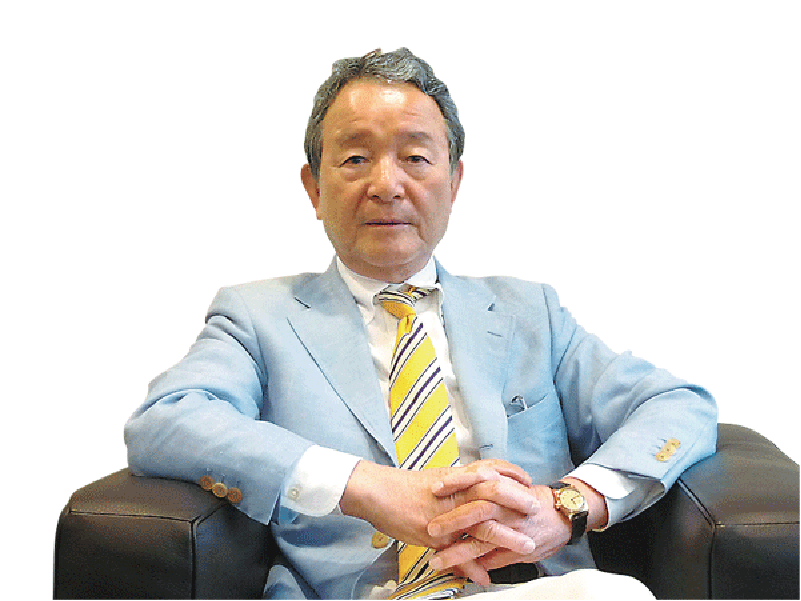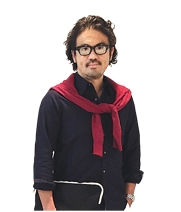■Tireless evolution
Yoshio Sadasue, CEO, Kamakura Shirts
It has been 50 years since I entered the apparel industry. When I joined Van Jacket Inc. in 1978 it was Japan’s top menswear company with annual sales of 45 billion yen. We brought Ivy League fashion to Japan and it took the country by storm. As a historically excellent company, it was idealised by young people as a great place to work.
Twelve years later, when I was 37, the company suddenly went bankrupt. The fashion industry was in full bloom. For a company at the heart of that industry to go belly up could not have been foreseen by anyone. Our growth strategy had exceeded the size of the market. The market had its limits. Upon further consideration, people inside the company failed at being aware of customers’ changing needs. Even a company that was at the forefront of fashion could not cope with the changing times. Ever since, the fashion-apparel business has been through ups and downs.
Was it something to do with being Japanese?
We are not good at learning from our failures. Even if we study the failures of those who went before us and we are enjoying a prosperous period, we need to watch out for ways to prepare for the next era. You must always stay humble with the mindset that nothing is certain in this world. The fashion industry is very difficult to survive in. You have to watch the trends and observe the objects of desire. To maintain your position at the top of the market, you have to not only establish unique skills as a company but also focus on continuous evolution.
■Take the sushi approach
Akira Minagawa, Minä Perhonen designer
All manufacturers must now consider how to build a sustainable, stable business
Many manufacturers probably calculate and set their prices based on a ratio with manufacturing cost. In other words, they set the price of a product to achieve a certain profit rate against the sum of raw material and production costs. But using this method, if material costs rise and fall but production costs are static, the profit number is higher when material costs are high. This means that, even if the operating rate is constant throughout the year, the amount of profit varies. At the same time, since higher material costs translate into higher profits, prices rise and competitiveness in terms of accepting orders is damaged.
This can be said to apply both to manufacturing and retail. For the future, manufacturing in Japan will need to boost the core value of human labour and ensure that this added value is reflected in the quality and design of products. Then profit can be gained from that value.
If I can compare this to sushi, as I often do, it is akin to taking a low-cost fish like a gizzard shad and carefully seasoning it. Another comparison would be taking a cheap, red cut of tuna, marinating it to the right point so that it would be as tempting as a top-shelf marbled belly,, and the chef applying effort and experience to present sushi as superb as that made by those using rare and expensive fish. That is the kind of approach needed.
This restless search in one’s work, combined with sense and judgment cultivated over decades, is very meaningful and extremely valuable. This is what we hope to build up as we work with manufacturers.
《WORDS》
■“It’s not where you buy it, but who you buy it from that matters.”
President of P.I, Keisuke Okunoya
Okunoya is a popular figure, known by the nickname, “the President in shorts”. Doing his best impression of a “man of letters”, Okunoya sends out daily updates not only on social media but also through handwritten direct mail, leveraging the power of interpersonal connections for his business.
■“A store has to strike a balance between depth and relatability.”
President of WEGO, Masashi Nakazawa
Sales revenue increased significantly for two consecutive quarters. Rather than proposing trends, “we hold meetings between the merchandising team and amateur models who come together in the PR office to discuss how different items make people feel and how they should be worn,” says Nakazawa. This sense of relatability is the secret to the company’s growth. Nakazawa aims to achieve even further growth, declaring “in the next quarter, we are planning moves so bold that they deserve three exclamation marks!”
■“I still have faith in the power of creation.”
ANREALAGE designer, Kunihiko Morinaga
Having come under the spotlight for shows that heavily utilised new technology, ANREALAGE has continued to grow steadily. Morinaga says, “There will always be value in being unconventional, seeing clothes from an unconventional perspective, and creating clothes in an unconventional way.”
■“We have no way of nudging online shoppers when they are struggling to make a decision.”
President of RESTRICT, Hiroshi Ise
RESTRICT Co., Ltd. operates ARK, a well-known men’s speciality store in areas outside Tokyo. This year marks the 20th anniversary of its founding. Although a decline in the number of speciality stores has been forecast as a result of the booming e-commerce market, Ise says, “Face-to-face sales will never disappear. As long as we continue to work to attract customers, brick-and-mortar stores will still be popular. Ultimately, this is a people-oriented business.” The company is focusing efforts on human resources development.
■“The industry’s lack of popularity may not be temporary.”
President of Sugino Gakuen, Kenjiro Nakamura
There is a strong sense of crisis about the decline in the number of young people who aspire to study at fashion schools. This cannot be explained away by the falling birth rates as the decline has been more drastic than in other sectors. Nakamura comments, “Among the many different occupations available, how are we perceived by young people and their parents? While being enjoyable and challenging on the one hand, how much freedom and flexibility is there in such a busy line of work? The appeal of the industry as a whole needs to be improved.”








